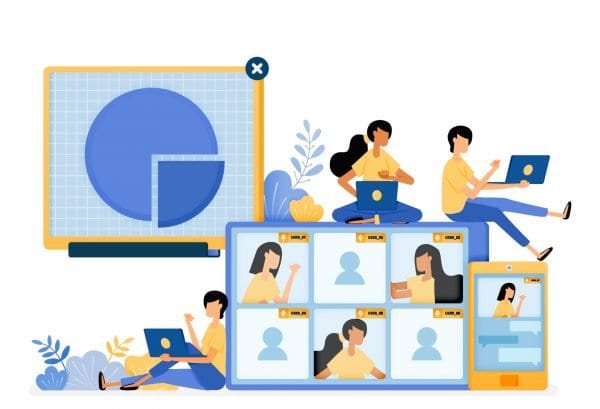Did you know that only around 22% of people who apply for work get their foot in the door by at least landing an interview? Only then you may become part of the 37% that could eventually be offered a position. You can see how vital it that your application gets noted, and many people are using a video resume to get them their hoped for jobs. Here’s how to make it work for you—and also find out if it’s the way to go in your industry.
The Role of a Video CV
Sending a potential employer a video CV is still an original approach to work applications, and definitely not the norm. Note that most employers will always prefer having your resume in paper or a digital, typed copy format as well. They need that for easy reference to the basic personal information of each candidate.
Still, there are many reasons to enhance your application by attaching the video to your application email. It can show your personality without the employer even meeting you, which could land you that interview you’re hoping for. In some industries—especially creative environments like graphic design or digital marketing—this unique approach may be appreciated.
A video also gives an opportunity to show your skills if you add footage of you in action. Or perhaps you’re applying for a job related to video work, in which case your video CV can prove your skill set.
Still, do take note that not everyone will approve of or accept a video resume. Some interviewers don’t want someone’s physical attributes influencing them when picking their shortlist of candidates. They may also deem it too informal, preferring the traditional interview setup.
As long as you know it will benefit your application, do use the following tips to make your video CV the tool to get your dream job.
How to Make a Professional Video CV that Will Get You the Job
A video CV can never be footage you captured on the fly using your smartphone. Only with careful planning and editing will it be impressive enough to impress for a job interview.
Consider Your Audience and the Video’s Purpose
Start off by making sure that a video will benefit your application. You can contact the HR department to inquire about their policies and preferences. Although there are traditional interview cons, some HR departments may refuse applications with attached video CVs. Also, carefully read the job description to see if it mentions video resumes.
You can use any communication with the potential employer to plan your content. If a job description mentions specific requirements, be sure to mention in your video how your background or skill set aligns with the preferences they have.
Some employers may ask for a video specifically—whether as part of applications or to use for performance reviews once you’re employed. Usually, they’ll have strict guidelines on time, content, and format. Don’t deviate from those, or you may be eliminated from the start.
Plan and Write a Script
Now you can write a script that will help you communicate vital information efficiently, in as little time as possible. If you don’t have a timeline provided by an employer, keep the video to 60 or 90 seconds at the most.
Some ideas for content:
- Answer general questions: Think of what other employers have asked you, or search online for common interview questions. Provide the answer for these in your video, such as how you handle conflict in the workplace.
- Focus on specific skills: Rather than giving too broad a view of yourself, focus on specific elements such as a personality trait you know is vital for the position, or a skill this niche in the industry will appreciate.
- Make it application specific: Don’t use a general video for all job applications, but rather compile a new one for each opportunity. If you provide relevant information for that specific position, the video CV will be much more valuable and make better impact.
Keep Your Look Professional
Despite remote working taking the world by storm, looking professional and having certain work ethics are still vital. Prove you’re aware of this by dressing professionally and picking a background that won’t distract the viewer. This also proves to the interviewer that you understand remote working best practices, should it be an option for your new position.
Capture Quality Footage
If you send a low-quality video to a potential employer, it could put them off from the start. It can send the message of you not worrying about the small details when performing your work. This proves the value of good software and equipment like a webcam.
Never only capture one version of the video CV. You need a few takes to get comfortable with the script and try out different tones of voice and facial expressions. Perhaps you’ll use that first take in the end, but give yourself a lot of footage to pick from, so you can optimize the final product.
Your footage can also incorporate footage of you performing certain tasks or proving your skills. You can use a screen recorder for Mac if you want to show off skills that take place using your Apple device. For example, show your future boss a few websites you’ve designed for friends, hoping to become the lead designer at a new digital marketing startup.
Do use software that’s appropriate for your PC, so the footage will be of the highest quality. So, if you have a Windows device, download software specifically created for the operating system.
Edit and Enhance with Visual Elements
You’ve come to the point of putting all the different segments together. Start off by picking the best of your captured footage and piecing it together in a logical, easy-to-follow sequence – video editing software will help you with that.
Now you can enhance your message by adding audio like music or visual elements such as words and images. For example, display your qualifications in words, while the recorded footage mentions it too. Emphasize what’s important to the employer, so they can remember it and easily recall when they start comparing different applicants.
Share for Feedback Before Submission
Don’t be too sure of yourself that you got it right the first time. We suggest you show your video resume to friends or family to get their feedback:
- Is there anything that distracts from your main message?
- Do you look at ease?
- Should you add any more information?
- What’s your best qualities that you could perhaps add if relevant to the position?
Pros and Cons of Video CVs
Pros
- Clearly show off skill set in video clips
- Prove your creativity
- Can get you noticed
- You have control of what interviewers see
Cons
- Without expert skills or quality software, a video can seem unprofessional
- If you aren’t confident innately, it may be amplified on screen
- It will take lots of time to compile a video resume
Conclusion
Technology has given you an alternative way to submit your next CV, but do put a lot of effort into your printed or typed resume as well. And, always make sure your video CV will help, rather than hamper, your application.
If it’s the way to go, thanks to modern tools, software and equipment, it’s fairly easy to create a quality product. And if you have tips for other applicants, please share below.





